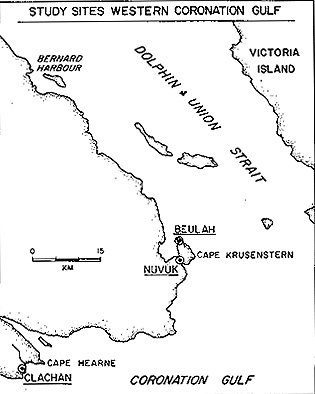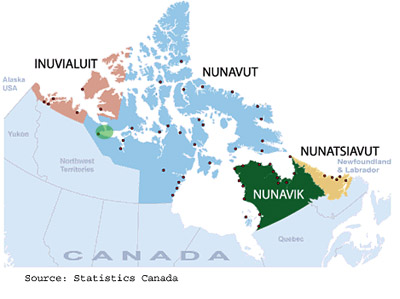|
Introduction
This is a
profile of Inuvialuit/Inuinnait trading transactions at Cape Krusenstern (Nuvuk (movie
clip), NWT
(NU) Canada,
one of many central
Arctic trading
sites
operating
during the contact-traditional
era of
Arctic
history.
"At
Cape
Krusenstern we
found a large
native
settlement.
The people
living in
canvas tents
were clustered
around two
small trading
posts. This
community
appeared to be
in good
circumstances
and the people
were, at the
time of our
visit, living
largely on
fresh-water
fish secured
from lakes
lying a few
miles to the
westward. A
good
collection of
native
photographs
was secured."
Burwash, 1931,
p. 88.

“Together
these
sites [Nuvuk,
Clachan &
Beulah] along
with others
already
excavated,
appear to
represent a
fairly
distinctive
stylistic
variant of
Thule culture
in the western
central
Arctic. This
variant is
primarily
affiliated
with western
rather than
eastern Thule,
and appears to
be of direct
Alaskan
origin."
"Subsistence
strategies are
also examined.
Subsistence at
the study
sites was
based
overwhelmingly
on ringed
seal, but a
number of
lines of
evidence
indicate an
economic
orientation
which was
quite
different from
that of the
historic
Copper Eskimo
of the area.”
Morrison,
1983, Thule
Culture in
western
Coronation
Gulf, N.W.T.
Abstract.
This
website
contains the
specific trade
transaction
data was
derived from
the historical
records of Slim and Agnes
Semmler's
Cape
Krusenstern
Trading Post
1935 -1947.
The
Inuit word
"nuvuk" means
a "point of
land", and
thus the Inuit
of the area
refer to the
Cape
Krusenstern
trading site,
where
Semmler's
operated their
trading post,
as being
Nuvuk.

source:
Statistics
Canada 2001
|